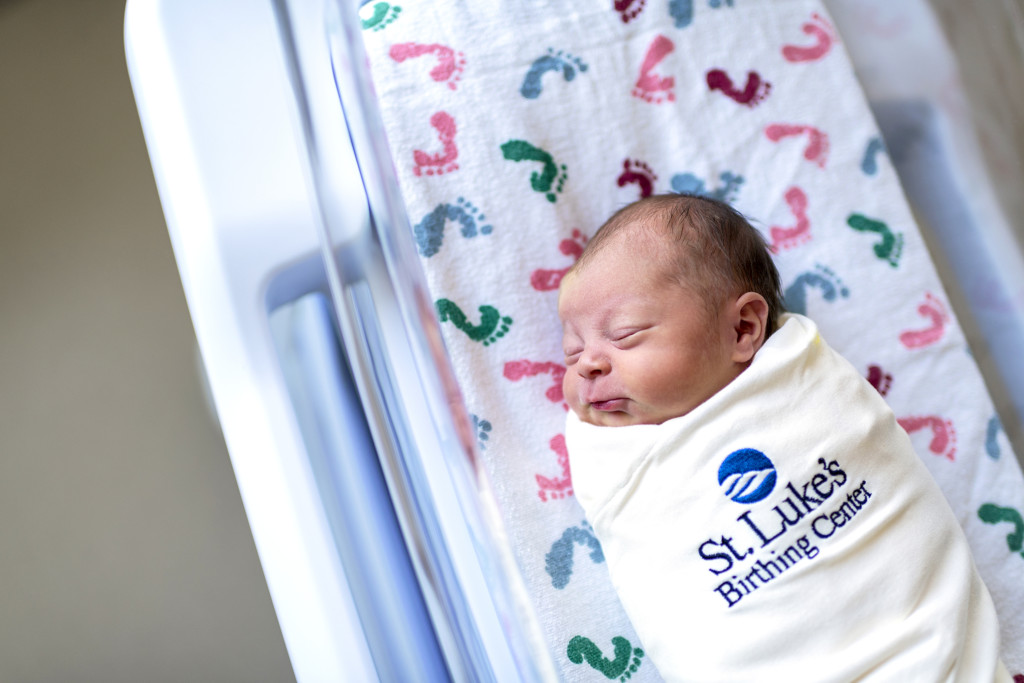
Babies are completely dependent on dad and mom. Each little one needs to be fed properly, changed regularly and held tenderly, just to mention a few necessities. To set families up for success, St. Luke’s Birthing Center covers as many topics as possible when educating parents on how to care for their newborn. One of these topics is how to create a safe sleep environment.
Certifiably safe
St. Luke’s was the first hospital in Minnesota to receive a National Safe Sleep Hospital Certification as a Silver Safe Sleep Leader by Cribs for Kids®. This organization is dedicated to preventing infant sleep-related deaths due to accidental suffocation.
To earn this certification, the St. Luke’s team implemented and maintains a safe sleep policy, trains staff annually, audits progress and provides education to parents prior to discharge.
A culture of safety
In addition to formal education, safe sleep practices are integrated into the culture of St. Luke’s Birthing Center.
Sleep sacks are used instead of blankets, and bassinets are included in each of the rooms to keep mom and baby as close as possible, while remaining safely separate during sleep. Each baby is also sent home with a HALO SleepSack®, which is the only safe sleep-approved blanket available. St. Luke’s Birthing Center aims to provide parents with as much evidence-based safety practices as possible so that the best decisions can be made for each family.
The ABCs of safe sleep
There’s already enough to think about as a new parent, so St. Luke’s uses a simple guideline: the ABCs of safe sleep. Created by Cribs for Kids®, a nationally recognized organization, this guideline helps parents remember that babies sleep safest when they are alone on their back in a crib.
Alone: Your baby should not sleep with others in a bed, on a couch or in a chair. Remove all loose bedding, comforters, quilts, sheepskins, stuffed animals, bumpers, wedges and pillows from your baby’s crib.
Back: Your baby should be positioned on his or her back during naps and at nighttime. Do not place your baby on his or her stomach or side.
Crib: During naps and at nighttime, place your infant in a safety-approved crib on a firm mattress. An approved Baby Box with a mattress can be used as well. Do not allow your baby to sleep on an adult bed, sofa, cushion or other soft surface.
Most new parents are understandably tired and snuggling up with your newborn for a nap sounds wonderful. However, babies can slide, be dropped or even accidentally be suffocated by a sleeping adult fairly easily. To keep your little one as safe as possible, follow the guidelines above and do not fall asleep with your infant.
For more tips and advice, or to see profiles of St. Luke’s OB providers, visit www.slhduluth.com/baby.










